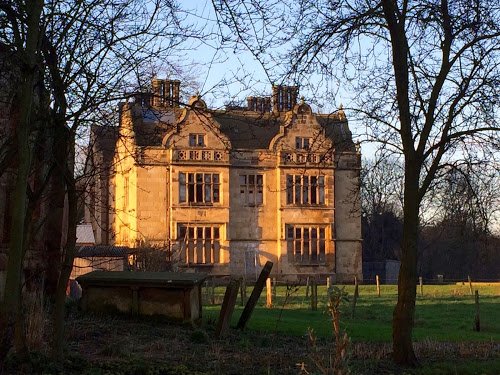
Situated in a beautiful location on the north side of a loop of the River Tees, near Darlington, Sockburn Hall has extensive grounds in which part of a pre-Norman Chapel still stands. An earlier manor house, which was for many years occupied by the Conyers family, existed in the grounds at the time the Sockburn estate was purchased in 1682 [i] by William Blackett (who later became Sir William Blackett), but this was long gone by the time that the historian Robert Surtees visited Sockburn in 1823. Sir John Conyers was the hero of the legend of the Sockburn worm. The legend and its possible origins are explained in a fascinating booklet by Paul Telfer.
The principal Blackett estates lay elsewhere, although a junior branch of the family seems to have lived in a small farmhouse on the estate. A larger farmhouse, which still exists, was where the poet William Wordsworth courted Mary Hutchinson while staying at the farm in 1799. (They were married in Brompton by Sawdon, Yorkshire, a few miles to the south, in 1802.) Wordsworth’s friend Samuel Taylor Coleridge, famous for his “Rime of the Ancient Mariner” also stayed at the farm and fell in love with Mary’s sister, Sara, although he was married at the time. It was at Sockburn that Coleridge wrote his ballad-poem “Love”, dedicated to Sara, which mentions a knight, based on a mailed figure on the Conyers tomb in the ruined Sockburn church.
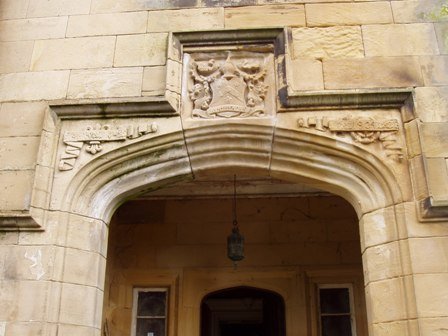
The present Sockburn Hall, a grade II* listed building, is built of ashlar stone and is of Jacobean style. The date, 1834, is shown above the main entrance. The house was built by the Blackett family for the occupation of Henry Collingwood Blackett, a younger son of Sir William Blackett (1758-1816), and the Blackett coat of arms is engraved above the main entrance. Incorporated into the internal decoration are examples of French and Spanish panelling reputed to be taken from French monastic document chests which were purchased by Henry Collingwood Blackett in Antwerp in 1830[ii].
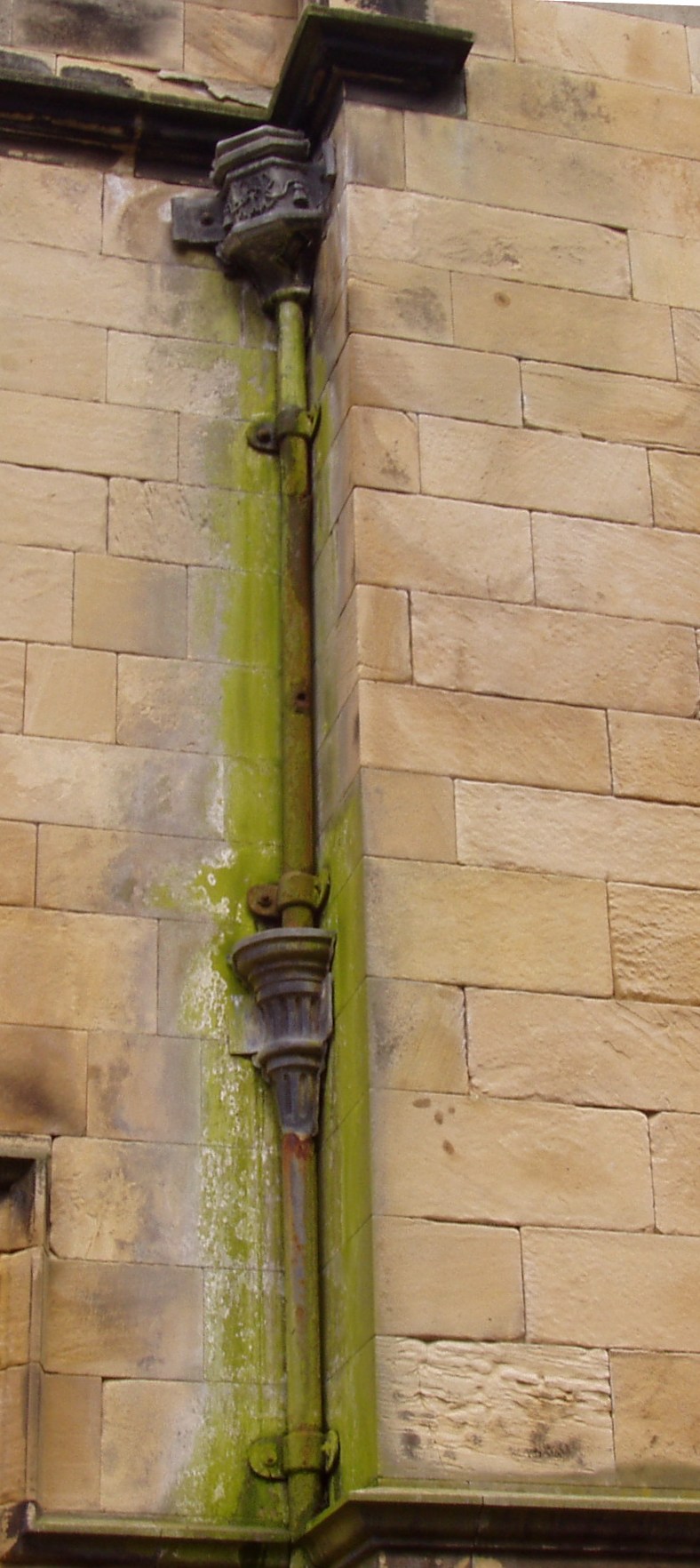
Displayed on a drainpipe running down the right side of the entrance are the initials of Henry Collingwood Blackett.
The 1851 census shows Henry Collingwood Blackett (head of household) and his wife Theophania living at Sockburn. With the death of Henry without issue on 27th May 1856 the estate would have passed under his father’s Will to his elder brother, Sir Edward Blackett, but Theophania seems to have been allowed to continue living there and the 1861 census shows her as head of the household. The 1871 census shows only servants living at the hall and Theophania may have been out of the country. She died on the 6th June 1877 and for many years the estate was rented out, although in 1911 Sockburn was occupied by Arthur Edward Blackett (1874-1959), a younger son of Sir Edward William Blackett, the eldest son and heir of Sir Edward. Arthur Edward Blackett finally sold the estate in 1920. Henry and his wife are buried in the graveyard of the redundant All Saints’ Church at Sockburn Hall.
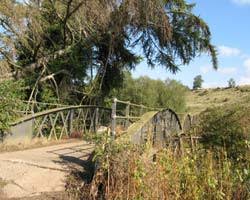
In 1870 Theophania had a bridge built about half a mile downstream from the hall to allow worshippers to cross the Tees to All Saints Church in Girsby, built in 1838 by the Blacketts to replace the original Sockburn church, which they had largely demolished. Her motives seem to have been less that purely philanthropic, however, as she had been taken to court by the Darlington Highway Board for blocking parishioners’ access to the church across her land by the ancient crossing/ford close to the hall [iii]. The parishioners thus gained a bridge to the church and Theophania gained her privacy.
An ode to Theophania’s bridge was included in "Tapestry of Time: Twelve Centuries at Sockburn", published in 2010.
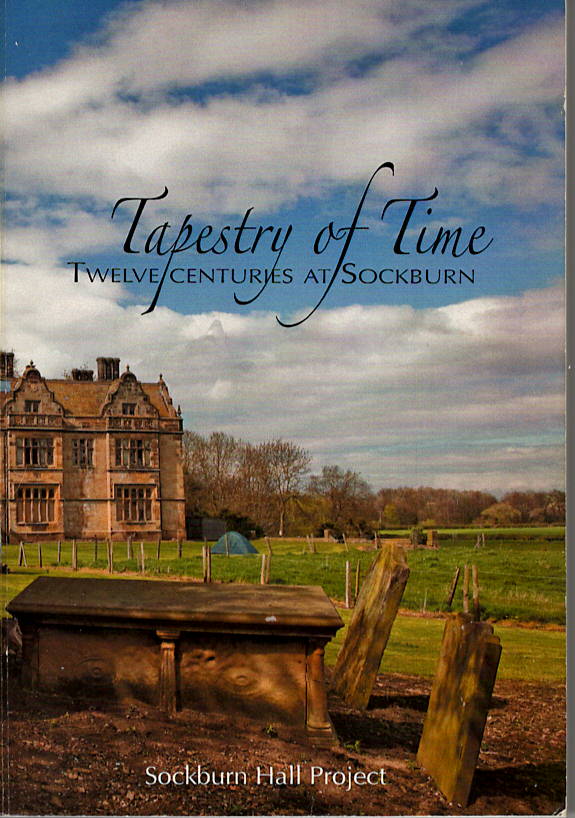
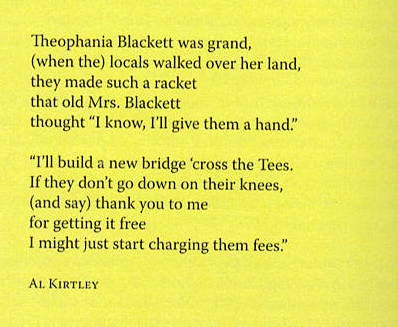
An earlier bridge across the Tees at Sockburn had been built by Henry Collingwood Blackett in 1836-1838 for his private use. The local press reported on 9 January 1837 that the river, much swollen by ice breaking up, had “carried away the new wooden bridge”, but the reports of its demise were premature. Although part of the temporary structure erected for use in the construction of the bridge was damaged, the bridge itself had not yet been erected and “not a single piece of timber of the intended structure had been prepared for the purpose” [iv]. The wooden bridge lasted from 1838 until 1890/91 and was then replaced by a suspension footbridge built c1910, which itself was destroyed by floods in 1985.
By the late 20th century the house had fallen into disrepair and was added by Historic England to its endangered buildings register, but in 2007 a major restoration project commenced, aided by a team of volunteers. Sockburn was subsequently sold and is now privately owned.

For our page on the Sockburn Hall book launch 4 July 2010 please click here.
Notes:
[i] Sir William Blackett married Julia Conyers in 1685. She was the daughter of Sir Christopher Conyers (1621-1693), 2nd Bt. of Horden, County Durham. The relationship to the Conyers family of Sockburn is not known.
[ii] Information kindly supplied by Erik Matthews.
[iii] Ironically, the ancient ford was reputed to have been used by a distant ancestor of Henry. In “A Sketch of the History of the Parish of Sockburn”, compiled by Bertha Clegg in 1910 (reprinted in 2010), she states that around 1066 the Saxon Princess Margaret journeyed by that route on her way to be married to Malcolm Canmore, King Malcolm III of Scotland.
[iv] Extract from The Civil Engineer and Architect’s Journal, No. 8, May 1838, p178 included in an article on the Sockburn bridge by Don Whitfield for The Cleveland Industrial Archaelogist No. 32 (2007). We are indebted to Owen Evans, a descendant of the Thompson family who bought Sockburn from Arthur Blackett in 1920, for a copy of the article.
